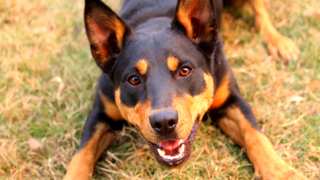As an athletic breed type, the Alaskan Husky diet will need to include food that has plenty of animal proteins and carbohydrates for energy; vitamins, minerals, and fiber for digestive and immune health; and omega fatty acids for coat and skin wellness. This means the best choice of food for Alaskan Huskies is the premium dry kind, because it has balanced portions of the above-listed ingredients--nutrients your Husky will need to sustain its health in the long term. Orijen, Royal Canin, and Taste of the Wild are three recommended brands that have excellent lines of premium dry kibble.
Some owners and breeders choose instead to feed their Alaskan Huskies a diet of fresh/prepared foods including lean meats, fruits and vegetables, eggs, and other protein sources--and while this food source is a great choice, many find such a diet for their dogs to be too expensive and time-consuming, and prefer premium dry food. Owners wanting to bolster their Huskies' diets can can add some prepared food (a bit of chicken and a few raw baby carrots, for example) to one meal a day, if they desire. Cheap, generic dog food is not recommended for Alaskan Huskies, because it contains mostly empty "filler" ingredients that simply won't keep a Husky healthy and energetic.
In regards to portions: the typical adult Alaskan Husky, depending on its age, size, and activity level, will need about 3½ cups of dry food per day, divided into two meals. Puppies, again depending on their age, will need a bit less: about 2½ cups per day, divided into three meals (not two) until six months of age. For more info on feeding an Alaskan Husky from puppyhood through maturity, refer to the following chart:
Alaskan Husky Feeding ChartDog AgeDog WeightFood TypeAmountFrequency2 Months8 lbsDry (Puppy formula)0.3 cups3x/day3 Months15 lbsDry0.5 cups3x/day6 Months25 lbsDry0.8 cups3x/day9 Months35 lbsDry* (Puppy/Adult)1.5 cups2x/day12 Months+45 lbsDry (Adult formula)1.75 cups2x/day*--Around this time, transition to adult food by first mixing in a bit of adult formula with the puppy formula. Over the course of a week, with each meal add a little more adult food to the mixture, until the dog is eating it entirely.
If possible, try and stick to the above-listed portions. As energetic dogs, Alaskan Huskies aren't especially prone to obesity--but these dogs can become overweight if constantly overfed and under-exercised. A fat Alaskan Husky will have major joint, breathing, and digestive problems, not to mention a shortened lifespan. You can help control your Alaskan Husky's weight by having consistent feeding and exercise schedules, by not feeding the dog table scraps, and by not leaving food in the dog's bowl all the time, thereby allowing it to eat anytime it wants. It's better to put your Husky's bowl down only at mealtimes, then pick it up a few minutes after the dog begins eating.
If you're worried your Alaskan Husky is overweight, give the dog this simple test: run a hand along its side, and if you can't feel any ribs, it's diet time. Reduce the dog's daily food consumption by one-fourth, and add an extra walk, jog, bike ride, or play period to its daily exercise schedule.

